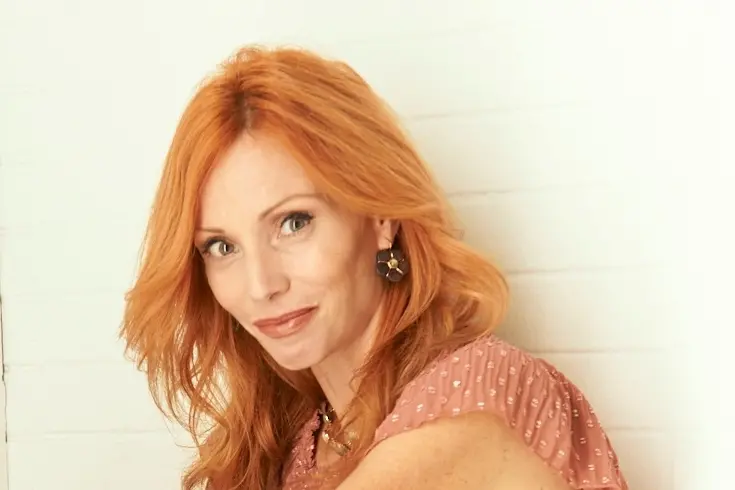No mercy for the weakest
Romina Casagrande is a novel that brings back one of the horrors of the Nazi eraPer restare aggiornato entra nel nostro canale Whatsapp
Many years have passed, yet Emma remembers every stone of Villa Freiberg. It is the place that gave shelter to her and her little brother Benjamin when, orphaned, they followed the last wishes of their father who died at the front. But waking up from illusions and dreams of salvation is a door that suddenly closes the day Benjamin disappears never to return. Emma, despite the time spent, constantly thinks back to Benjamin, the taciturn child who loved solitude and drew with incredible skill. Benjamin, who was taken to a clinic along with many others like him, considered fragile and unsuitable, to be subjected to the experiments of Nazi scientists willing to sacrifice lives to pursue a crazy ideal of perfection. Like many and many like him, that child was the victim of Aktion t4, one of the most controversial operations in history. An operation which, in silence, prepared the ground for the horror of the extermination camps. Years have passed since then and Emma has never known what happened to Benjamin. But now the villa has been inherited by a woman who, among the objects spared by time, has found an old ring and a packet of yellowed photographs. Perhaps they are clues leading to Benjamin. Emma must decide whether to reopen the chest of memories, even if it means facing the pain of choices and mistakes. Because maybe it's not too late to fulfill the promise to care for and protect that too defenseless brother.
After "The children of Swabia" (Garzanti, 2020), Romina Casagrande returns with "The legacy of Villa Freiberg" (Garzanti, 2023, pp. 352, also e-book) to tell a dark page in the history of the twentieth century: the clinics where those who for whatever reason were considered “different” were held and tortured.
We asked Romina Casagrande what were the sources of inspiration for the novel:
«Everything comes from a real place - Villa Freischütz in Merano - and from its adventurous recovery. Its owners, Franz Fromm, a wealthy German wine merchant with a passion for art, and his composite family divided between France, Germany, Italy and South America, lived there in a very turbulent period for the Upper Adige, surviving, thanks to friendships and ties with the elites of the time, the Italianization brought about by Fascism and the years, between 1943 and 1945, in which the region effectively became an offshoot of the Reich. The house contains important papers that belonged to a fascist general as well as objects from all over the world. But when his rooms were opened for the first time, in 2013, all his past was hidden by rubble and garbage, so much so that he doubted there was still anything to save. Years later the Villa, which has become a museum in the meantime, continues to speak to us and amaze us with stories that have their roots in a border region, a region with a history made up of many shadows and few lights».
What links the royal villa to the Aktion t4 operation?
«One of the members of the Fromm family was affected by cognitive disorders and for this reason wanted by the Nazis. The discovery of an object, depositary of an almost erased memory, triggers the historical core of the novel: Aktion t4, a Nazi eugenics operation that aimed to eliminate the 'different' through steps that anticipate and prepare for the atrocities of the concentration camps. Patients were removed from their families with the promise of treatment and care, but traces of them were completely lost, so much so that even today it is often difficult to reconstruct their fate. They were taken to smaller towns, and left to die of hunger and starvation, or they became the subject of experiments and finally killed in the gas chambers of places of death such as Grafeneck or Hartheim, a castle in the Austrian countryside that hides its horrors in the basements. The definition of 'different' included very different situations – children born out of wedlock, people suffering from hereditary diseases, difficult boys and women with freer behavior, addictions such as alcoholism – experienced, often also by family members, as a shame».
In your latest novels you constantly evoke the theme of painful childhood, you talk about children forced to come to terms with experiences greater than themselves. Why this choice?
«In this novel I expand the field with a look at women, hit harder in their being the cornerstone of a continuity that inspires fear and, for this reason, forced to sterilize, an annihilating and devastating practice with irreversible psychological and social repercussions. My interest in chiaroscuro remains, the opposite ages. It's the way life takes the edge off and shuffles the cards."
How important is it to come to terms with one's past choices and with one's non-choices?
«Perhaps we need to give meaning to pain, learning to share it. In this case it is the challenge to tame a shapeless giant, made of bricks, wood and moss, which has swallowed lives, stories, choices, covering them under the dust of time. Bringing them back to life, for the protagonists, is a challenge and an opportunity to feel less wrong: the second chance that we all seek after all».
How important is memory and is it possible to build a shared memory?
«I strongly believe in sharing Memory when it is made up of stories, small portraits that lead History back to its most authentic and perhaps most human being because, when we talk about micro-history, basically we are talking about relationships, affections, relationships, something with which easier to compare. Giving a face, a name to the protagonists of these stories makes us more responsible, in turn witnesses».
